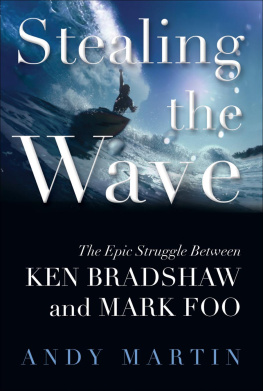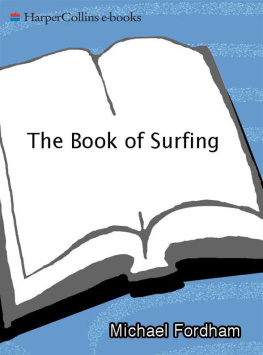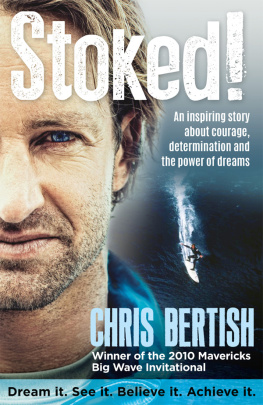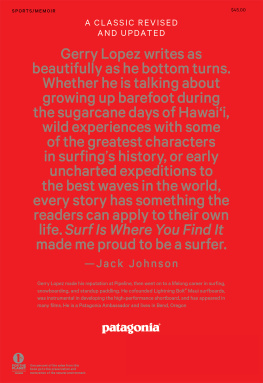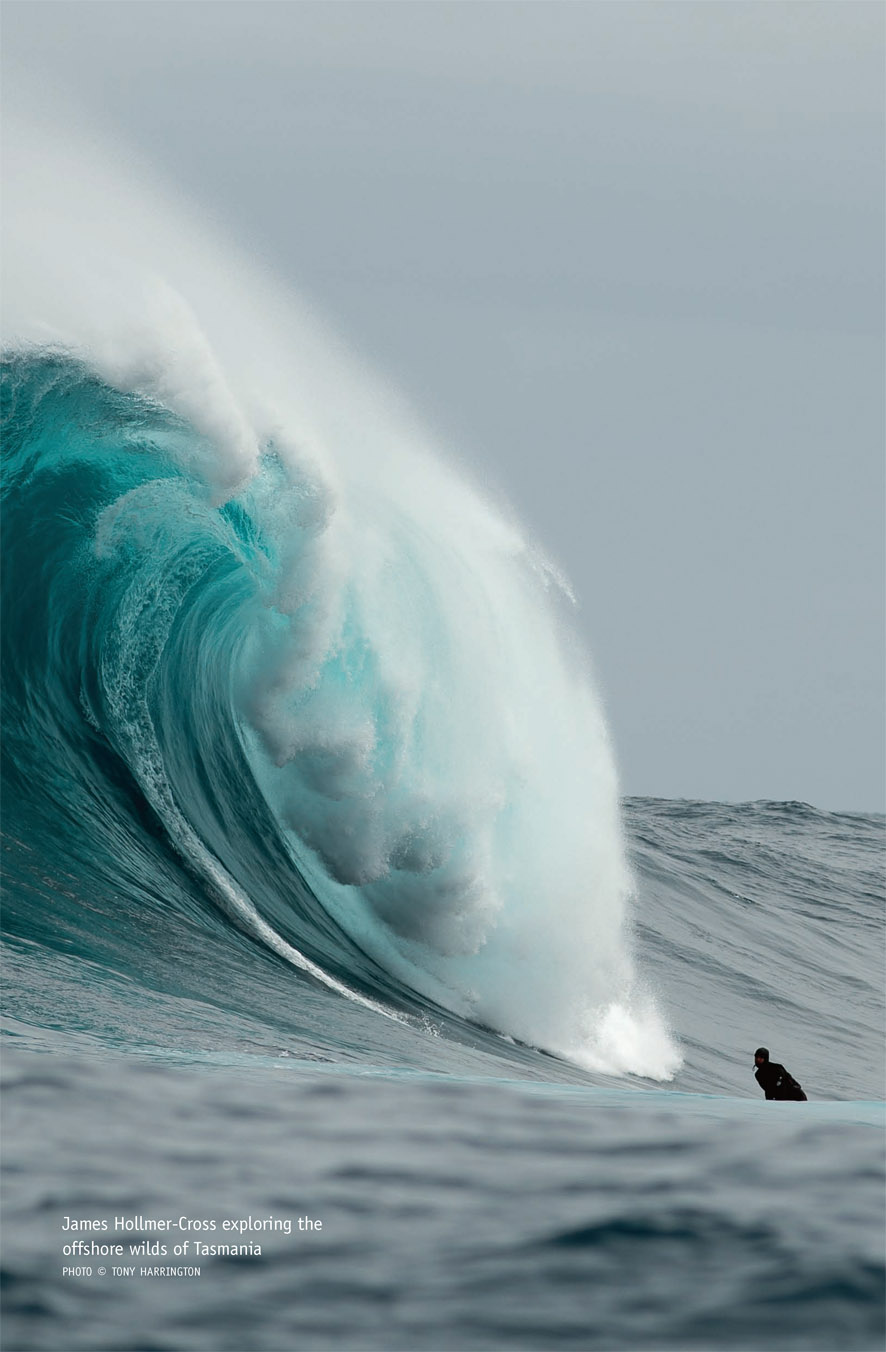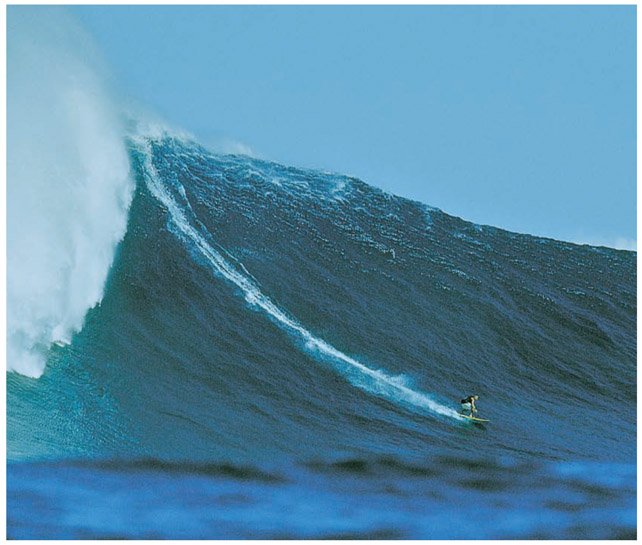ABOUT THE EDITORS
John Longs award-winning short stories have been widely anthologized and translated into many languages. His booksranging from literary fiction to instructional manualshave sold more than two-million copies. He has written big budget feature films and Emmy and Monitor (international) award-winning TV shows, but his first interest has always been books. His large format book, The Stonemasters, won the Grand Prize at the Banff Film and Book Festival, widely considered the most prestigious outdoor-oriented literary award in the world. Several of Longs large format books are in the Museum of Modern Art. He lives in Venice Beach, California.
Sam George is one of the worlds leading authorities on the sport of surfing. A former professional competitor, world traveler, editor of Surfer and Surfing magazines, and author (Surfing: A Way of Life, The Perfect Day, SURFER at 50), Sam has also written and/or directed a number of award-winning documentaries, including Riding Giants, The Lost Wave: An African Surf Story, and Hollywood Dont Surf. He lives in Malibu, California.
ACKNOWLEDGMENTS
We would also like to acknowledge the following writers and surfers for their contributions: Shane Dorian, Mark Healey, Dave Wassell, Greg Noll, Maya Gabeira, Mike Parsons, Greg Long, and Vincent Lartizen.
Also thanks to editor Gregory Hyman. Big Juice took about fifty different forms according to what we could and could not get cleared, and Greg rolled smoothly with all the changes. If he ever cussedand we gave him good reason toit was entirely under his breath. Lastly, special thanks to Jessica Haberman, who essentially produced Big Juice and wrangled, month after month, everything from photo editing to tracking down permissions from writers holed up in Haiti and the jungles of Thailand. We have a hell of a book to show for her efforts.
BIG WAVE TIMELINE
1935
Tom Blake, doing research in Honolulus Bishop Museum, discovers that the last remaining redwood olo surfboard in existence belonged to Chief Abner Paki, reportedly a nineteenth-century big wave rider from Makaha.
1936
Honolulu surfers Fran Heath, Wally Froiseth, and John Kelly collaborate to produce the first surfboard designed specifically for bigger waves. They call their narrow-tailed, deep-V creation the hot curl.
1937
The Waikiki hot curl crew begins riding winter surf at Makaha, establishing the right reef/point break on Oahus West Side as the epicenter of big wave riding development.
1937
Northern Californias Steamer Lane, a booming right reef/point in Santa Cruz, is first surfed.
1943
Trapped outside by a rapidly building swell at Sunset Beach on Oahus North Shore, surfers Woody Brown and Dickie Cross attempt to paddle 6 miles down the coast to the ordinarily calm waters of Waimea Bay. Caught by a huge set that closes out the bay, Brown washes to shore naked. Cross is never seen again.
1951
George Downing, a surfing prodigy from Waikiki, shapes the first modern big wave board, a 10-foot balsawood pintail complete with raked fin. Thus armed, Downing establishes himself as the sports premier big wave rider.
Pete Cabrinha on one of the biggest waves ever ridden70-plus at Jawsgood for a 2004 Billabong XXL Global Big Wave Awards check and a Guinness Book world record
PHOTO ERIKAEDER.COM/BILLABONGXXL.COM
1952
A front-page Associated Press photo of Woody Brown, George Downing, and Buzzy Trent sliding across a 15-foot Makaha wall lands on Americas doorstep, triggering an almost immediate migration of intrepid California surfers to Hawaii.
1955
Surfers Downing and Froiseth and California transplants including Flippy Hoffman, Buzzy Trent, Peter Cole, Rick Grigg, and Greg Noll begin regularly riding the big waves on Oahus North Shore.
1956
Waimea Bay is successfully ridden for the first time in modern times. Its summit team included Greg Noll, Mike Stang, Mickey Munoz, Bob Bermel, Bing Copeland, and Pat Curren.
1961
The hollow left-breaking North Shore tube later known as the Banzai Pipeline is first board-surfed by Californian Phil Edwards.
1962
Greg Noll and Mike Stang ride an 18- to 20-foot winter day at Palos Verdess Lunada Bay, a hint at the potential of West Coast big wave riding that would not gain traction for another twenty-five years.
1963
Noll and Stang again make North Shore history by riding the seldom-breaking, deep-water cloud break known as Third Reef Pipeline.
1964
American International Pictures releases Ride the Wild Surf, a full-length Hollywood feature set in Hawaiis big wave surfing scene. California hot-dogger Miki Dora doubles for star Fabian, Greg Noll for his nemesis Eskimo Dobbs.
1965
The Duke Kahanamoku Invitational, the sports first big wave competition, is held at Sunset Beach. Its won by sixteen-year-old Jeff Hakman.
1967
A massive winter swell hits Waimea Bay, creating what were then considered the biggest waves ever surfed. Filmed by a score of surf filmmakers, this day seals Waimeas reputation as surfings ultimate challenge.
1969
The biggest North Pacific swell ever recorded (even to this day) rocks the coasts of California and Hawaii. Santa Barbaras Rincon is ridden at 20 feet. In Hawaii Greg Noll, alone in the lineup at Makaha Point Surf, drops into surfing immortality when he takes off and survives on the biggest wave thus far attempted, an estimated 55-foot closeout.
1972
Surfer magazine runs a travel article featuring Craig Peterson photos of huge, 15- to 18-foot tubes breaking along the coast of mainland Mexico. Although the break is left unidentified (its later revealed to be called Petacalco), it inspires a few hardy West and East Coast surfers to begin ordering 9-foot guns.
1974
The Smirnoff Pro-Am, then the most prestigious competitive event on the North Shore, goes off in giant Waimea Bay surf. In the biggest waves ever seen for a contest, Hawaiis Reno Abellira just barely edges out Jeff Hakman for the $5,000 first-place check.
1975
Sixteen-year-old Jeff Clark, a surfer from Half Moon Bay, California, begins regularly riding a break outside the towns harbor jetty. Named after a fishing captains dog, the spot is called Mavericks.
1977
North Shore standout James Booby Jones methodically attempts to ride the massive tube at Waimea Bay. His first completed ride, caught by photographer Dan Merkel, would be a feat that would not be repeated for another thirteen years.
1978
Big wave ace and pioneering North Shore lifeguard Eddie Aikau dies while attempting to rescue fellow crew members of the Polynesian voyaging canoe Hokulea, which foundered off the coast of Molokai. Neither Aikaus body nor his board was ever recovered.
1983
With the sports focus shifting to exotic travel and the burgeoning pro tour, big wave riding takes a back seat. Surfer magazine addresses this issue with a major cover story entitled Whatever Happened to Big Wave Riding? The sport would find out soon enough.
1984
The Billabong Pro, ordinarily held at Sunset Beach, is moved to maxed-out Waimea Bay during a supersized swell. While a number of top-ranked pros refuse to even paddle out, the event is won by four-time world champion Mark Richards of Hawaii, ironically better known for his development of the small-wave, twin-fin design.


